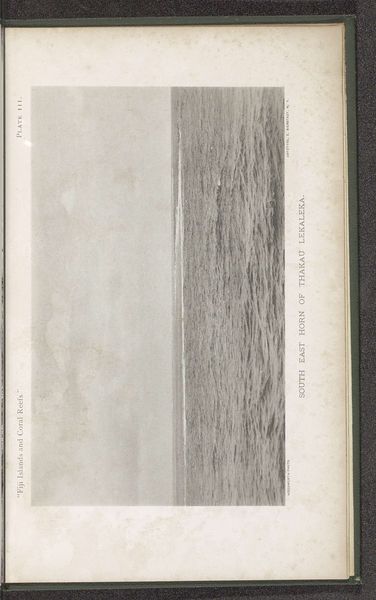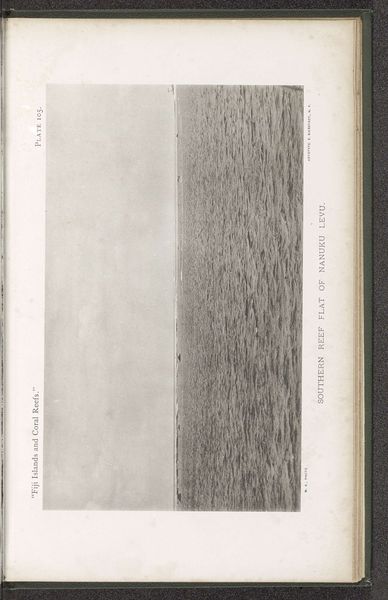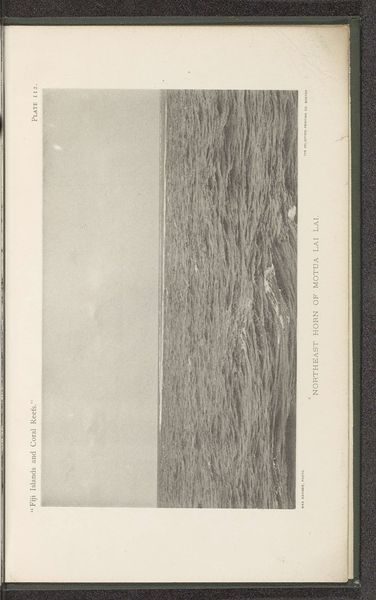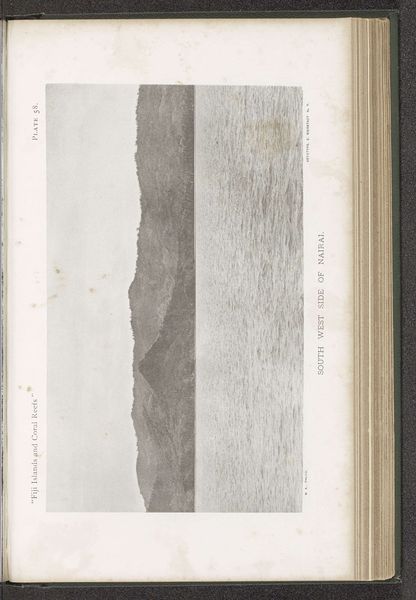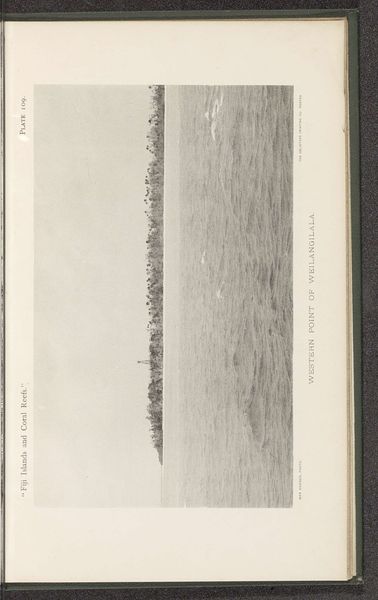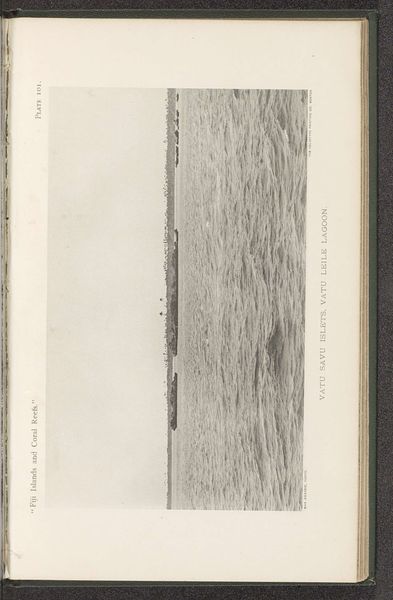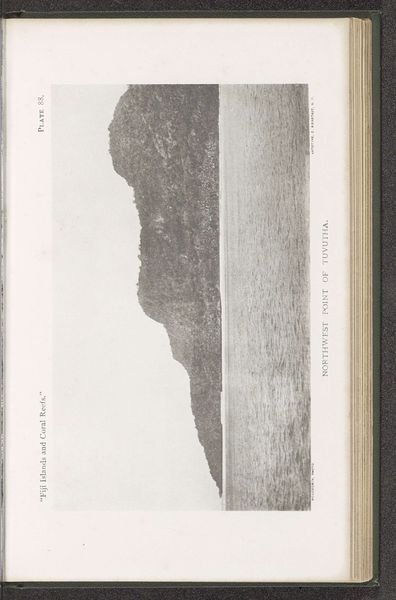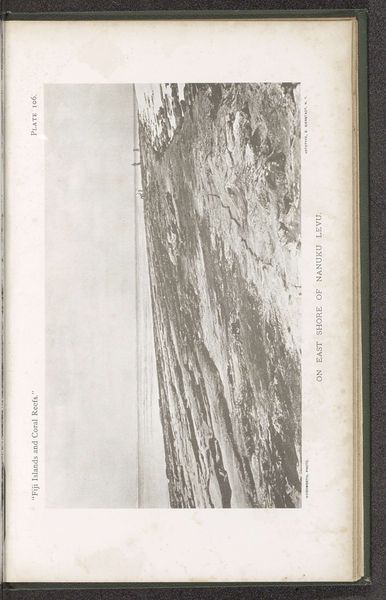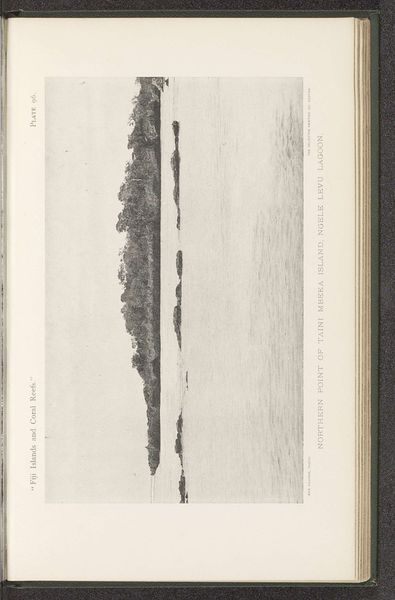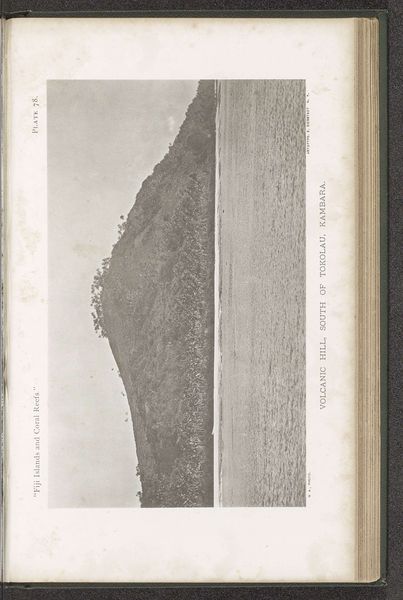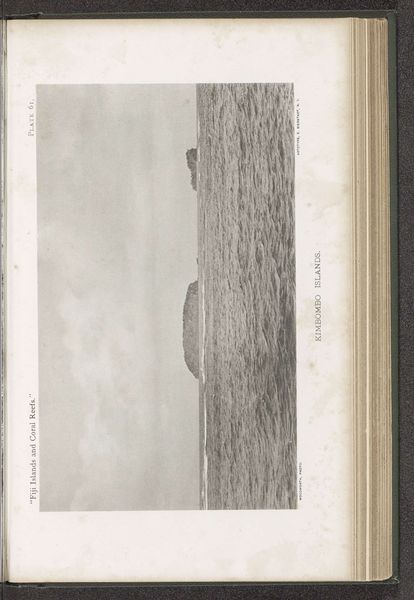
#
photo of handprinted image
#
aged paper
#
homemade paper
#
pale palette
#
pale colours
#
ink paper printed
#
light coloured
#
white palette
#
fading type
#
pale shade
Dimensions: height 108 mm, width 179 mm
Copyright: Rijks Museum: Open Domain
Editor: So, this is “Gezicht op een kaap aan de noordwestkust van Vatulele,” or “View of a Cape on the Northwest Coast of Vatulele,” made before 1899 by Maximilian Agassiz. It looks like a photograph, probably from a book? It's quite faded and desaturated, giving it a distant, almost ghostly feel. What do you see in this piece? Curator: That's a great starting point. Immediately, I see a representation steeped in the colonial gaze. Agassiz, likely part of the Western scientific establishment, documented this landscape presumably for a European audience. How do you think the act of photographing, collecting, and classifying Indigenous lands contributed to power dynamics? Editor: Well, documenting it like this, almost like a specimen, makes the land and its people into objects of study, reinforcing Western dominance. Curator: Exactly. Consider the composition. The photograph seems to prioritize a "scientific" observation of the landscape, framing it in a way that could strip the land of its cultural significance to the indigenous population of Vatulele. How might an Indigenous photographer have captured this same view? Editor: Maybe they would have focused on different elements, things that are actually important to them rather than things that are “scientifically” important. They might include people, or stories associated with this place. Curator: Precisely! By understanding whose perspective is privileged and whose is marginalized, we can begin to deconstruct the narratives imposed upon these landscapes and create space for Indigenous voices and self-representation. Also consider, this was 'before 1899'. What events related to race, politics, gender and colonialism were happening that year? Editor: I see what you mean. It really challenges us to consider the politics embedded in even seemingly objective landscape images. Thank you. Curator: It encourages us to always question the power structures that inform our understanding of art and the world.
Comments
No comments
Be the first to comment and join the conversation on the ultimate creative platform.
